AppleInsider · Kasper's Automated Slave
About
- Username
- AppleInsider
- Joined
- Visits
- 52
- Last Active
- Roles
- administrator
- Points
- 10,963
- Badges
- 1
- Posts
- 66,634
Reactions
-
How to fix weak Wi-Fi on a M4 Mac mini when connected to a drive or dock
Sporadic reports on social media are talking about how hooking up an external hard drive to a New Mac mini is dramatically cutting Wi-Fi speeds. Here's why it's happening, and how to reduce the impact of it, or stop it entirely.
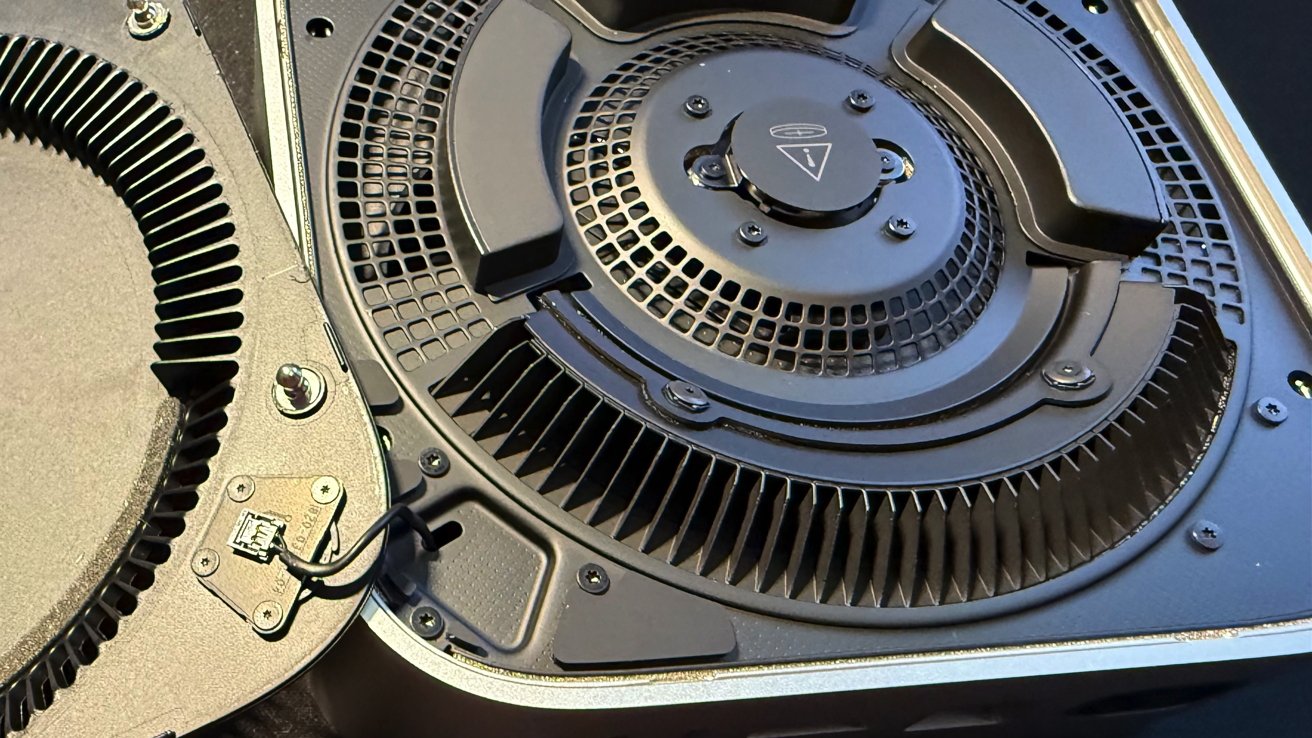
The new M4 Mac mini Wi-Fi module is marked by that exclamation point
Hours after the new Mac mini hit customers' desks, some users started complaining that when they hooked up a hard drive or SSD to the unit, they'd see Wi-Fi speeds drop, or be cut entirely. The reports were almost always followed up with the realization that when disconnected, the Wi-Fi speeds would go back to normal.
I've been looking into this for a few months, since I did the first reviews of the hardware here at AppleInsider. While there are an incredible amount of variables, I can confirm that I've seen this.
But, it's not every drive, dock, or cable that induces the problem.
Let's look at why Wi-Fi speeds can be hit by attaching something like a hard drive, and what you can do about it.What can cause Wi-Fi signal strength drops
While I'm not going to get into the physics of it, or too much into the inverse square law, Wi-Fi, like any form of electromagnetic radiation can reduce in strength -- or be attenuated -- between the transmitter, and the recipient. In this case, the Wi-Fi base station, and the new M4 Mac mini.
Normally, the main attenuator is building materials. As a general rule, the denser the material, the more attenuation. Folks with very old plaster lath walls, for instance, or cinder block construction, have more issues with attenuation than plywood and drywall.
Another factor is wavelength. For the most part, the 2.4 gigahertz band on a Wi-Fi router is less impacted by materials, with the 5 gigahertz band hit more.
And, RF interference can cause a problem too. This is the disruption of radio signals by other electronic devices emitting electromagnetic radiation in the same frequency range as the broadcast. This is the main factor why, back in the day, some baby monitors would crackle badly when near an early Wi-Fi router, or why a wireless house phone would sometimes knock a base station off the air entirely.
And, RF interference is why you should avoid putting a Wi-Fi router near a microwave oven.
What we're dealing with in the case of the Wi-Fi speed drops with a drive attached to a M4 Mac mini is a combination of Apple's design, materials, and RF interference.Apple and peripheral design
The case of the M4 Mac mini is aluminum, with a plastic lower case. There are no breaks in the aluminum for the Wi-Fi antenna, so Apple has placed it underneath that very thin plastic base of the unit.
For the most part, this is fine. The desks and surfaces a Mac mini are generally placed on are wood, which has nearly no Wi-Fi attenuation.
Since that plastic is so thin on the base, things get a little dicier when the unit is placed on top of a metal-enclosure hard drive, or dock, for instance.
After a month of testing the first arrivals, mostly iffy brands cranked out quickly after release, putting the Mac mini on top of a dock cuts the power of the Wi-Fi received by the unit dramatically, with the impact mostly varying based on how much metal surrounds the Wi-Fi module, or is in close proximity.
A number of docks are about to ship after the 2025 Chinese New Year, and AppleInsider as a whole will be looking at this more as we go. Our dock reviews will address Wi-Fi attenuation.
A shorter-term solution for any of these docks is to not put them underneath the Mac mini. They fit just as well on top of the unit as they do the bottom.Mac mini RF interference with low quality cabling
This has been trickier to test. Initially, I didn't have any problems at all with Wi-Fi attenuation when just plugging in a cable.
Ultimately I found a combination of an off-brand USB-A to USB-B cable, paired with an inexpensive USB-C to female USB-A adapter that could cause the problem. It didn't matter which enclosure I used -- when paired with the cursed cable combo, I could reliably get Wi-Fi signal attenuation when in use.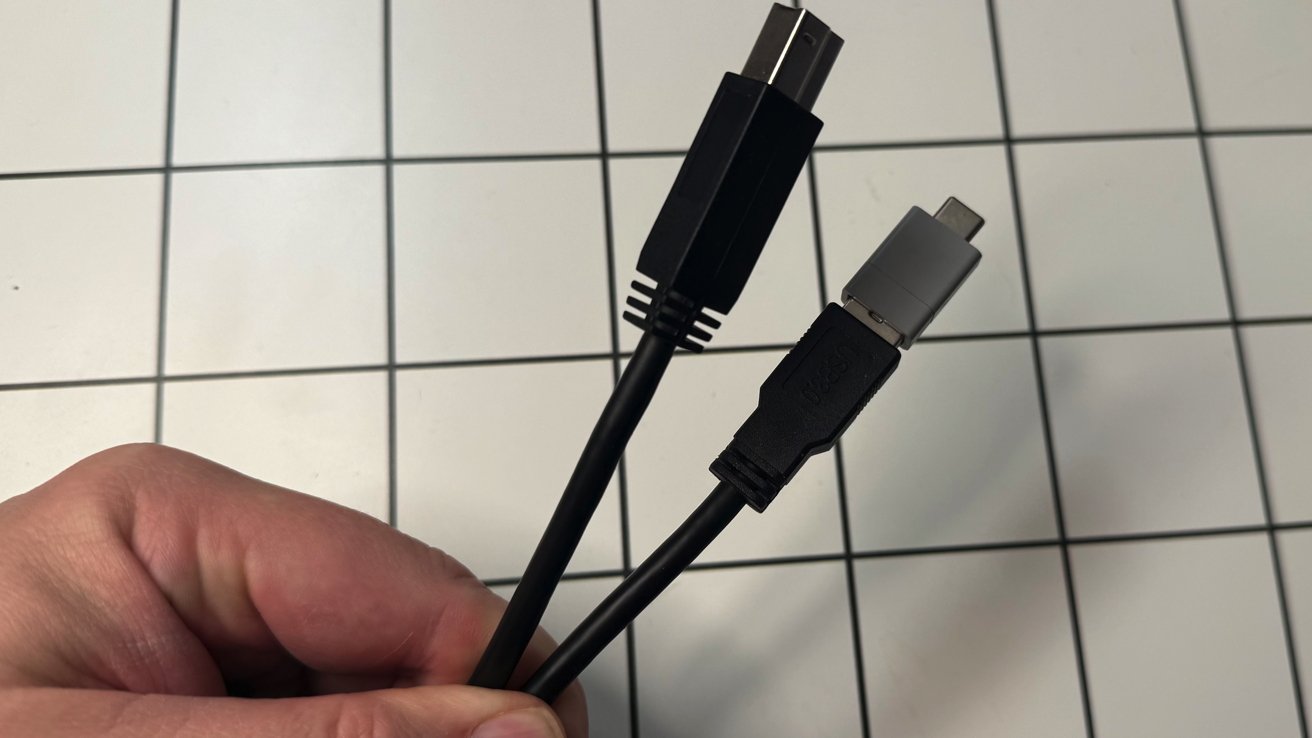
The cursed cable combo in question. Note the gap between the adapter and cable plastic body
I also tried this same cable combo on a M2 Mac mini and a Mac Studio. Both had Wi-Fi attenuation with the adapter and cable.
But, both were less impacted than the new Mac mini is, though. This is likely because of a combination of the Wi-Fi module on both being farther away and thicker case materials.
A similar problem manifested on an Asus NUC that I tried it on. The interference also happened on a PC tower that I have for gaming, but less because the cable was plugged in much farther away from the Wi-Fi antenna than possible on the Mac mini.
I talked about the inverse-square law above. The backside of the inverse square law is that the further away you can put a source of interference from a RF transmitter, the less interference you'll get.
This practically manifests in the cable combo's lesser interference with the PC tower, and the Asus NUC, since the Wi-Fi antenna in both cases was farther away from the source of that RF interference.
So, this is a clear case of RF interference generated by the cable combo. It was exacerbated by putting the Mac mini on top of the metal hard drive enclosure, adding material attenuation to the problem.How to stop getting Wi-Fi signal cuts on the M4 Mac mini
In my previous lifetime working in part as exposure control on a US Navy submarine, there was a mantra we spoke about it: Time, distance, shielding.
The first term, time, doesn't apply so much here. This was about minimizing personnel exposure times when it was necessary to be exposed to ionizing or RF radiation.
Distance matters here, though. We don't want to reduce exposure, here, we want to increase it. So, in the case of the hard drive enclosure, or dock cutting Wi-Fi strength, keeping a distance, sometimes only millimeters, from the potential shield makes all the difference in the world.
Distance isn't really changeable in the case of the cursed cable combination. That connection has to be close, given the nature of USB.
What's changeable here is the shielding on the cable.
I am frequently mocked for my cable walls in the house. I have two pegboards holding daily-use cables for this job, and a standby bucket.
A sample of one of the cable walls
When I haven't used a cable in a while, it gets bound up with a velcro tie and put in that bucket with a date for purging at some point down the line.
Cables on that wall and in that bucket vary in quality. Sometimes, the cables that are included with a drive or peripheral aren't the greatest.
For example, the USB-A to USB-C adapter I used for the bad cable that I fished from the bottom of that bucket came from a peripheral. The USB-A to USB-B cable is about four years old, and came from a drive that I shucked to put in my storage array.
Put simply, inexpensive cables aren't always your best bet here. Adapters also add another potential point of failure. In this case, they specifically add another possibility for poor shielding to cause a problem.
The wall also holds cables ranging from just-charging to higher-quality Thunderbolt 3, Thunderbolt 4, and USB4 cables. In every case, I was able to eliminate the impact of the cursed cable combo by simply not using it, and using a USB4 or Thunderbolt cable.
Do you have Lego in the house? In a pinch, lift the Mac mini off of a metal enclosure with a single plate to get some distance between the metal and the Wi-Fi module. Or, just keep them side-by-side, instead of in a stack.Not a flaw in the Mac mini -- but it could have been better
There doesn't appear to be a hardware design flaw, or a software issue, with the new Mac mini causing the Wi-Fi problems when connected to a drive. Arguably, Apple could have shielded the USB-C cable penetrations slightly better, but every design of anything, everywhere, is a series of compromises.
Thinner and smaller designs, like the M4 mini redesign, mean that there is less metal to shield the unit from RF. It also means that the components are in closer proximity than they've been in before, aggravating the impact of sources of interference.
Sometimes, millimeter-separation makes all the difference in the world when you're talking about material shielding, or RF interference. That's the main takeaway here.
Better cables mean better shielding. Moving a metal-cased enclosure away from the RF module on the bottom center of the case helps too.
Combine the two, and your problem is probably solved.
Read on AppleInsider




-
India tries telling Apple to pre-install government iPhone apps
The Indian government wants its own state-backed apps to be pre-installed on every iPhone and Android phone, but Apple and Google are expected to refuse.
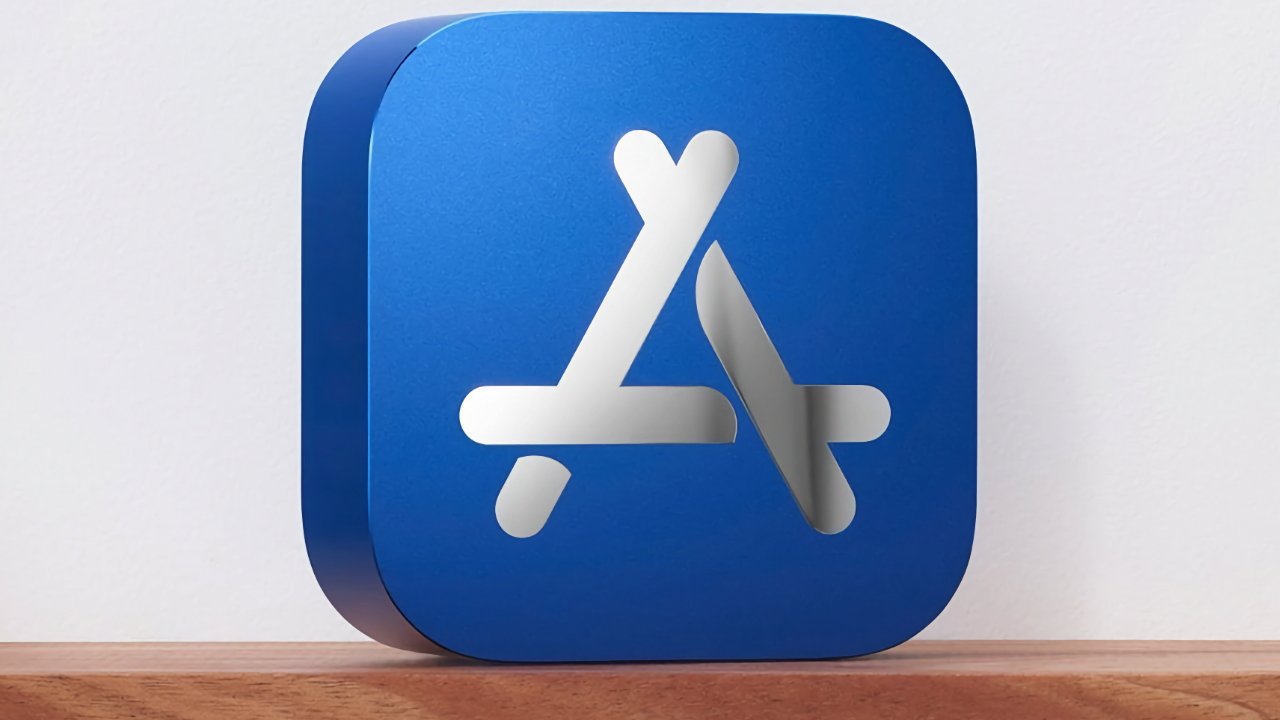
India says Apple has abused its dominant market share of iOS apps
India's government has a thing about pre-installed apps, having previously told Apple it should let its experts examine them before any updates are allowed. That was reportedly in a private discussion in 2023, and appears to have gone nowhere -- which might be what happens with the new demand too.
According to Bloomberg, India's latest private discussions with Apple and Google revolve around the government's own apps. It wants its own state-backed suite of apps to be supplied pre-installed on all phones, and also to be downloadable from third-party App Stores without "untrusted source" warnings.
Android accounts for 90% of the Indian population's approximately 700 million smartphones, and Google is reportedly refusing to comply. The same unspecified sources say that Apple is expected to do the same.
There were apparently discussions about legal recourse in a meeting between the government with Apple, Google, and other smartphone manufacturers. The possibility of changes to India's laws to require pre-installed apps was reportedly raised.
Unlike the idea of India vetting all app updates before Apple or Google could release them, though, there is a possibility that this new request will work. As well as the potential for law changes, there is also precedent.
In 2021, Apple finally agreed to pre-install apps on iPhones sold or activated in Russia. It followed a law change that was introduced in 2019, although then briefly postponed.
One factor that may also mean Apple is more likely to agree to India's demands is that every app under discussion is already available on the App Store in that country. So they have all already gone through Apple's App Review process, and the Indian government's reasoning is that pre-installing them is the way to greatly boost their usage.
However, Apple has resisted the Indian government's apps before. In 2017, India complained that Apple was dragging out talks over its anti-spam app because it involved call log data being sent to the Telecom Regulatory Authority of India.
Apple did eventually agree to make a constrained version of this app that didn't surrender user data. Google simply allowed the app onto its Google Play Store without delay.
There is also this issue, though, of the apps being made available on third-party app stores and without cautionary warnings. It's hard to see why India would want this if it wins the pre-install argument, unless this is the first step toward forcing Apple to open up third-party app stores in general.
That seems more likely since the European Union was successful in doing the same thing.
Read on AppleInsider
-
EU may be reassessing billion-dollar Big Tech fines as it waits for Trump
All the impending EU fines and rulings against Apple, Google, and Meta, are reportedly off the table as Europe awaits Trump -- and reveals just how political its regulations are.
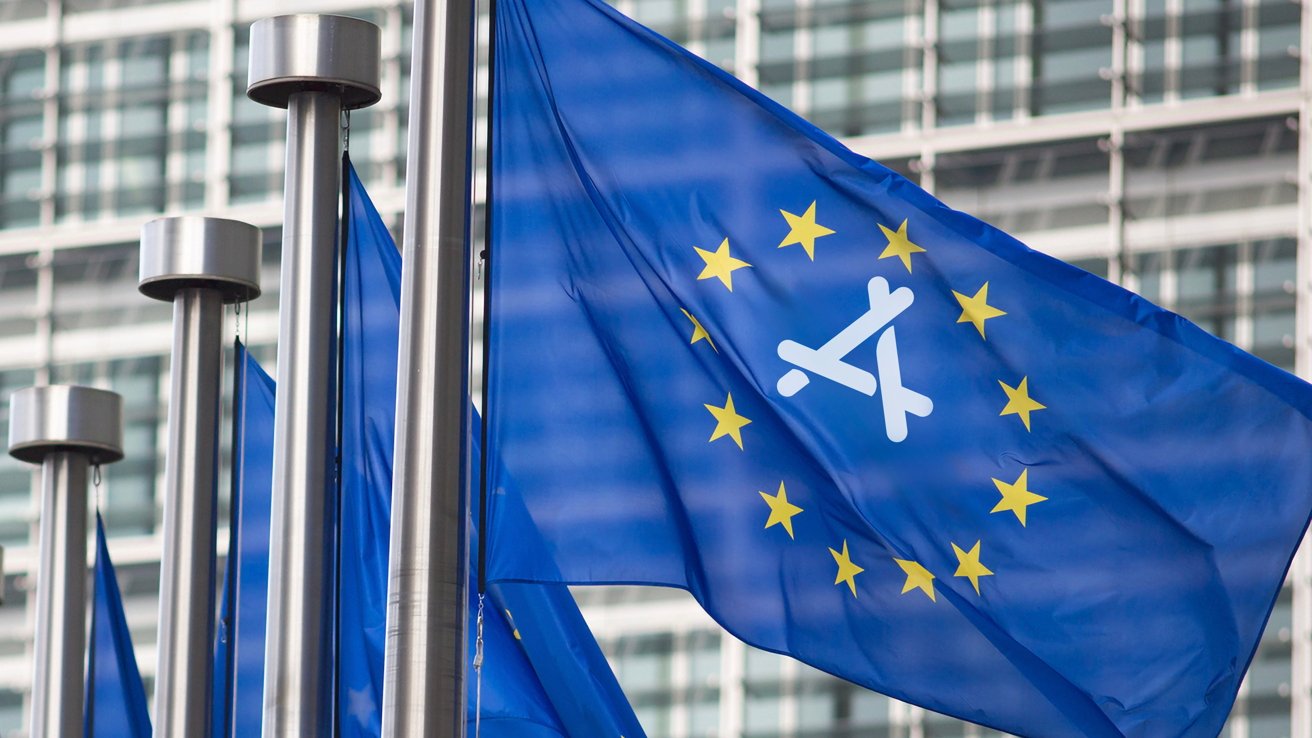
The EU has reportedly paused its probes into Big Tech issues such as Apple's App Store rules
For ten years, the European Union and especially competition chief Margrethe Vestager, has been working to control Big Tech. It's done so mostly very successfully, with the region being the first to implement a Digital Markets Act (DMA) that laid out conditions -- and especially potential fines for transgressions.
Now according to the Financial Times, however, all of the regulator's plans for fines are on hold. Only what is described as technical work will continue on any of the Big Tech investigations, and for the moment there will be no fines.
It's because the main EU chiefs responsible have reached their term limits and are leaving. And it's surely because the incoming Trump Administration in the US is expected to listen to Big Tech lobbyists and push back against regulation.
"It's going to be a whole new ballgame with these tech oligarchs so close to Trump and using that to pressurise us," an unnamed senior EU diplomat said. "So much is up in the air right now."
Reportedly, two further EU officials said that regulators in Brussels were now waiting for political direction. Until they get that guidance, they will not be making their final decisions on cases such as those against Apple, Google, and Meta.
However, these comments have been denied by the European Union. "There is no delay in finalising the opened non-compliance cases, and especially not due to any political considerations," said an EU spokesperson.
Yet EU lawmakers such as MEP Stephanie Yon-Courtin have been pressing the regulators to continue, because the DMA "cannot be taken hostage" because of political or diplomatic reasons.
Yon-Courtin was among those involved in the original drafting of the EU regulations. She has asked the European Commission's president to "reassure me that your cabinet and yourself are fully supporting the effective implementation of the DMA, without further delay."The EU and Apple
The EU was not shy about enforcing the DMA during Vestager's tenure, nor of imposing fines. In March 2024, it fined Apple $2 billion for anticompetitive practice with Apple Music -- despite Apple's streaming service being far from dominant.
It's decisions were controversial, then, and sometimes nonsensical. Plus Vestager has been swift to lambast Apple over any perceived slight against the EU.
Vestager has been successful, at least in the eyes of the EU. As well as getting is 27 member states to pass the DMA into law, it's because of the EU that Apple's iPhone switched to using USB-C for charging.
Plus it is because of the EU that Apple was forced to pay Ireland $14 billion in back taxes -- despite even Ireland saying it was wrong.
Apple may well have made that USB-C switch anyway, but it wouldn't have been with the iPhone 15 range in 2023. And Apple would never have even considered allowing third-party app stores -- and has unsuccessfully fought against them.
While Apple appears to have followed EU regulations with practically surgical precision, its rivals have described it as doing so with malicious compliance. Epic Games said Apple's EU concessions were "hot garbage."
Consequently, by June 2024, it was expected that the EU would fine Apple over its alleged failure to comply with the DMA. That appears to be one of the decisions that has been put on hold, and perhaps more because of EU administration changes than America's.
Margrethe Vestager is being replaced as Executive Vice-President of the European Commission
For in August 2024, it was announced that Margrethe Vestager would not be getting a third term as European Commissioner for Competition. She'd already publicly predicted she would be out of the role, though, so possibly decisions were already being delayed pending the changes.What happens next
The European Union has easily been the most successful territory in imposing regulations over Big Tech, but everywhere from India to the US is working to do the same. The pressure on Apple to open up its systems is ultimately going to continue, then.
But the fact that fines, investigations, and decisions, are all being paused points to just how much regulations are really political decisions. Tim Cook has already described some of the EU's decisions as "total political crap," and it looks like he's right.
The politics will not end, however, even as the EU is said to be reviewing its processes. For as the EU pauses, Big Tech is cozying up to incoming President Trump in order to get political might on its side.
It's likely, then, that Big Tech firms will see less impact from regulation for the period of the next administration.
Whether or not that's good for consumers, though, will be irrelevant. While all sides, doubtlessly including Apple, will proclaim that they only want to protect users, this is going to be a fight between governments and Big Tech.
Or rather, it's going to continue to be. For all that it should be applauded for being the first territory to successfully implement a Digital Markets Act, the EU's decisions have favored companies over consumers.
The EU would deny that, and it has repeatedly insisted that it is working to protect users. But as its fine against Apple Music showed, the EU has continually and even unreasonably favored Spotify, a firm based in its territory.
Read on AppleInsider
-
Next generation CarPlay is missing in action as Apple fails to hit its own deadline
Back in 2022, Apple loudly talked up its next-generation CarPlay before quietly committing to it being released in 2024 -- and now it's saying nothing about having missed that deadline.
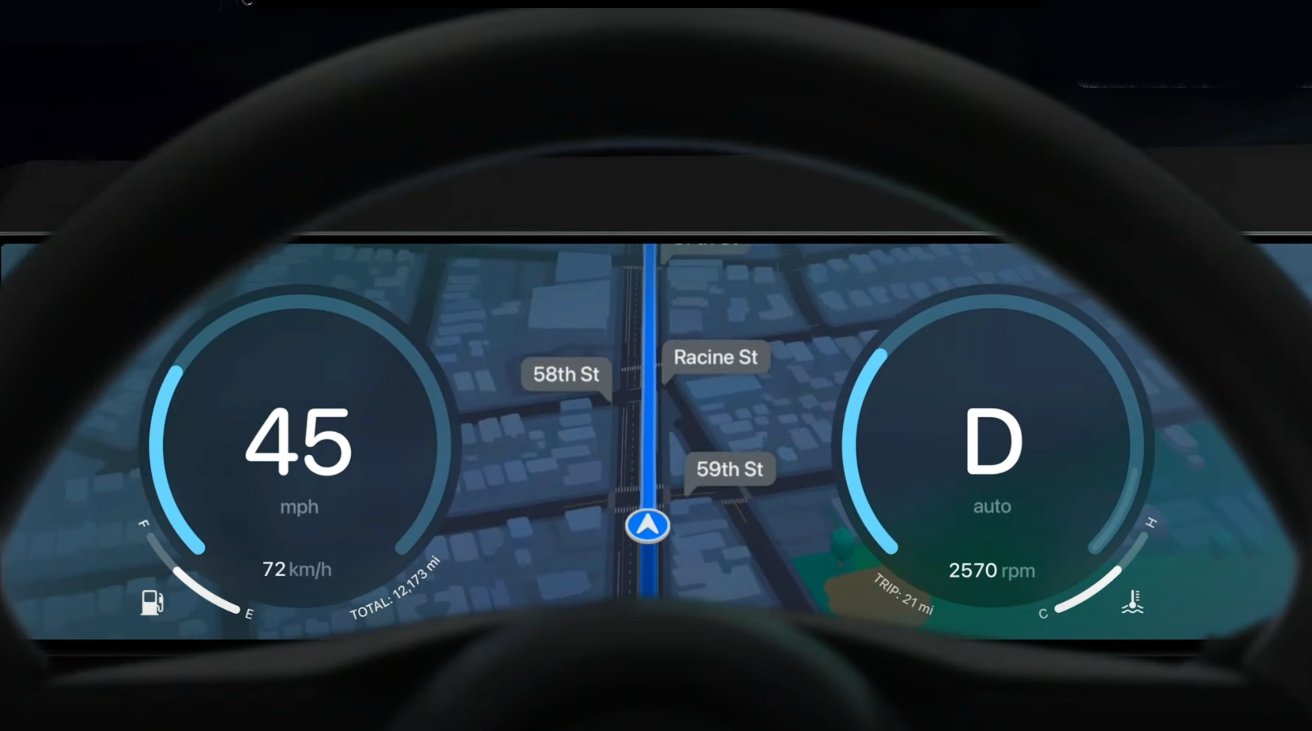
The new CarPlay would take over all car information and entertainment functions -- image credit: Apple
Apple has always had a reputation for refusing to announce or even admit to something it was working on, until it was ready to ship. Yet when it gave what it called a sneak peek at the new CarPlay in 2022, it sounded as if it were ready.
"Automakers from around the world are excited to bring this new vision of CarPlay to customers," said Emily Schubert, Apple's Senior Manager of Car Experience Engineering at WWDC 2022. "Vehicles will start to be announced late next year, and we can't wait to show you more further down the road."
What Apple showed was nothing less than the complete takeover of a car's entire dashboard by CarPlay. Instead of being confined to a square-ish screen that shows a few apps, the new CarPlay runs everything.
The speed display, the rev counter, the trip counter, whether the car was in Drive or Park, everything. The new CarPlay would use every screen in the car -- and be adapted so that "no matter what type of unique screen shapes or layouts you may have, this next generation of CarPlay feels like it was made specifically for your car."
Schubert is a 20-year veteran of Apple, and in October 2023, she was promoted to Director, Car Experience. But while she is presumably plugging away at the new CarPlay, those excited automakers don't appear to be.
Apple showed a slide featuring 14 car manufacturers, from Audi to Volvo, and none of them have released a car featuring the new CarPlay.
To be fair to Schubert, her three-minute WWDC speech only committed Apple to how cars would start to be announced in 2023, and she wasn't wrong. In 2023, both Porsche and Aston Martin showed off what were basically concept designs.
However, they did so simultaneously on December 20, 2023 -- and neither has actually released a car. Aston Martin committed to a 2024 launch, but Porsche wouldn't be drawn on any date.
And if Apple's WWDC announcement was also carefully-worded, Apple's website announcement was not. "First models arrive in 2024," it said.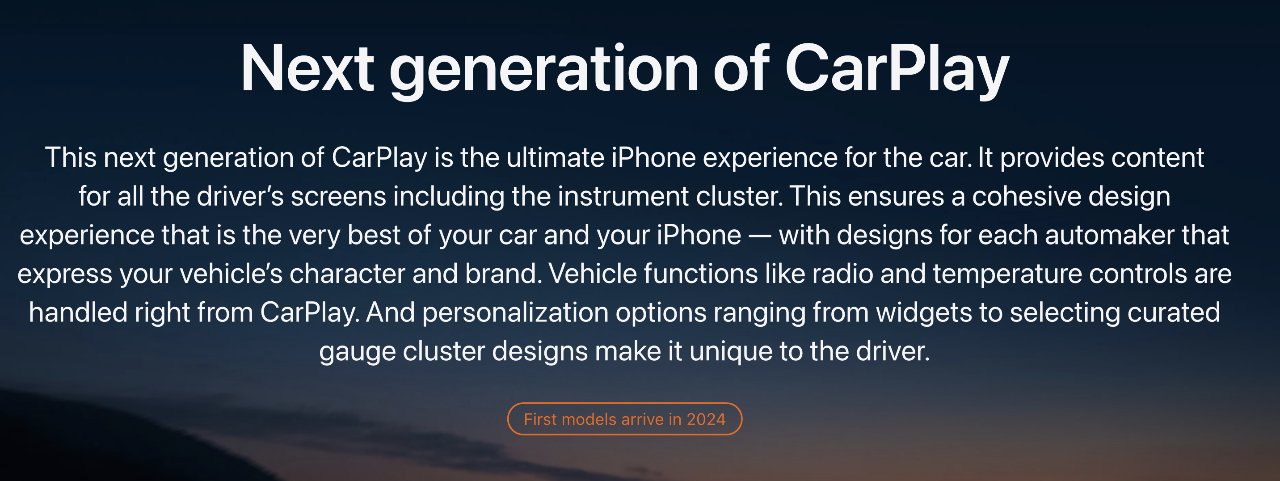
The key phrase is at the bottom -- "First models arrive in 2024" -- image credit: Apple
At time of writing, it still says that.Money doesn't solve everything
It's easy to say that Apple has so much money that it can throw at any problem, but there are limits to even its resources. There are limits when you're working with any outside firms, let alone 14 of them, for which your CarPlay project may not be a priority.
Then it's surely not an easy task to have an iPhone communicate "with your vehicle's real-time systems in an on-device, privacy-friendly way, showing all of your driving information, like speed, RPMs, fuel level, temperature, and more," as Schubert said.
It's just unusual that Apple would either announce a major release early, or that it would fail to correctly assess how long the project would take. There was speculation in 2022 that the announcement was really made because car manufacturers appeared to be abandoning support for CarPlay.
Schubert also said in her speech that "79% of US buyers would only consider a car that works with CarPlay," which did definitely sound like a shot across the bows of car makers thinking of leaving.
Some still did, though it's not been a great or popular move for those manufacturers.
There was also speculation that this new CarPlay was actually a sneak peek at the Apple Car -- but the car project was then abandoned.
Maybe CarPlay has been abandoned too, although there have been signs of its life in regulatory databases.We've been here before, on a smaller scale
Or maybe it's just a larger-scale version of what happened with Apple Music over its classical music app. Apple specifically promised that Apple Music Classical would be released in 2022, after the company acquired classical streamer Primephonic in 2021.
While it missed its 2022 deadline, Apple Music Classical was also constantly rumored to be about to launch. There was also evidence, too, in the form of code in iOS.
In the end, Apple Music Classical came out as practically a surprise, a few months into 2023. It's still been a long rollout to different Apple devices, although most recently it was made available -- on CarPlay.
The new CarPlay could go the same way. But unlike Apple Music Classical, its fate is not entirely within Apple's control.
Instead, it depends on Apple and at least 14 major car manufacturers.
Read on AppleInsider
-
Keychron Q5 HE review: Marvelously magnetic mechanical keyboard
The Keychron Q5 HE is a great mechanical keyboard that proves that magnetic switches are useful for more than gaming.

Keychron Q5 HE review
HE keyboards are a great upgrade for typists and gamers for their durability, precision, and customizability.
The HE stands for Hall Effect, which describes part of how magnets influence electric charge. This finds its way into keyboards when manufacturers put magnets into the switches and use this effect to sense when a key is pressed much more accurately than an analog mechanical switch.
The technology took the keyboard community by storm this year. It provides a great advantage to gaming, as you can customize your key actuation with absolute precision through software.
Over the summer, HE keyboards stirred up significant controversy within the Counter-Strike 2 community. This controversy led to their ban in tournaments due to features such as magnetic switches' being able to trigger different inputs at different points of actuation during the key press.
Despite this, HE keyboards still provide several advantages for everyone, including faster response times and reduced wear on the switches.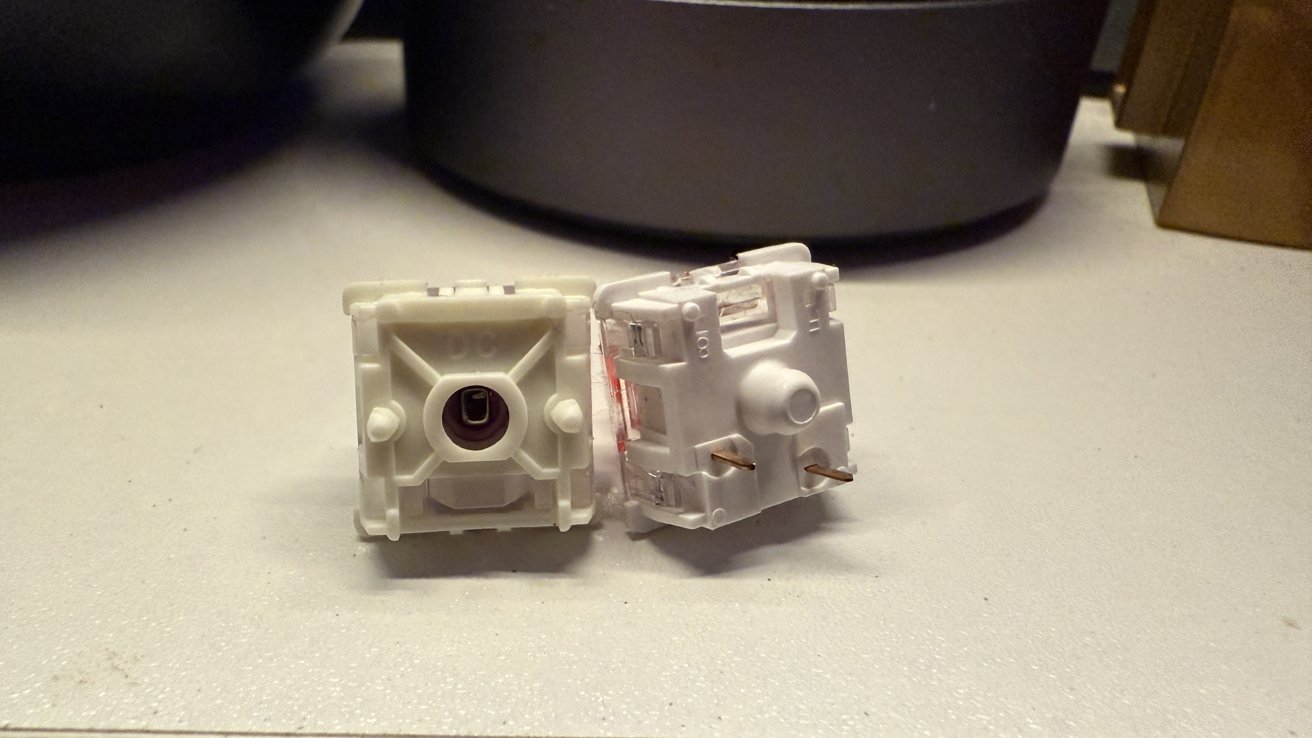
Keychron Q5 HE review: Gateron Nebula switch on the left, Keychron K Pro Red on the right. You can see the magnet inside the Nebula switch.Keychron Q5 HE - Design
The Keychron Q5 HE and the Q5 Pro have a lot of similarities; they both have all-metal bodies, knobs, RGB, and customization through software and hot-swapping.
But that's where the similarities end. The Q5 HE has different keycaps, magnetic switches, and compatibility with the Keychron launcher.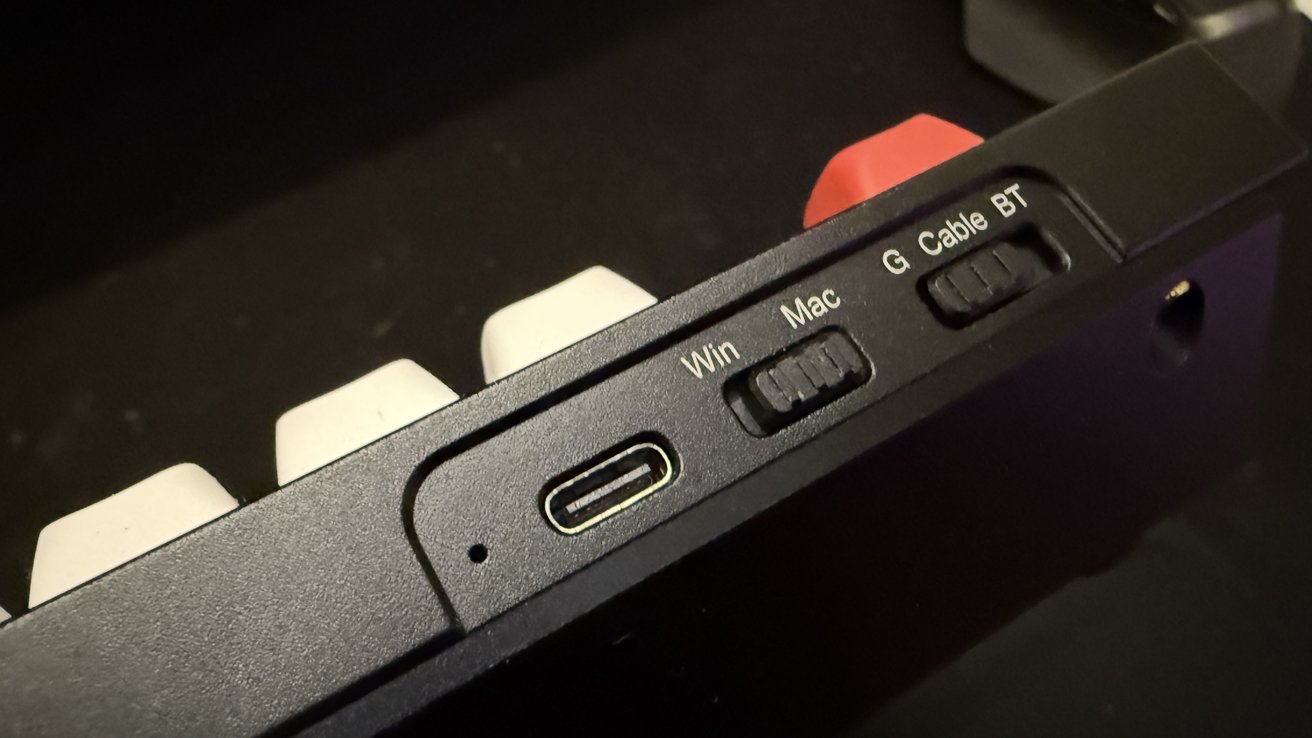
Keychron Q5 HE review: Switches on the back for OS and connectivity.
You can fully customize the Q5 HE from the ground up on website.
The keycaps are "OSA" - OEM spherical angled. It seems keyboard specs are full of acronyms, but OEM-type keys are taller in the back of the keyboard and shorter in the front. It's nothing unorthodox, and it's quite comfortable on the fingertips.
The pre-assembled version comes with the Nebula Gateron double-rail magnetic switch. The Dawn and Aurora versions are available to buy, having different starting and ending forces.
Keychron's Launcher web app goes a long way in managing mapping your keys, requiring Chrome/Opera/Edge for your browser. It has a new update for their HE keyboards, allowing you to manually set the actuation distance for each key.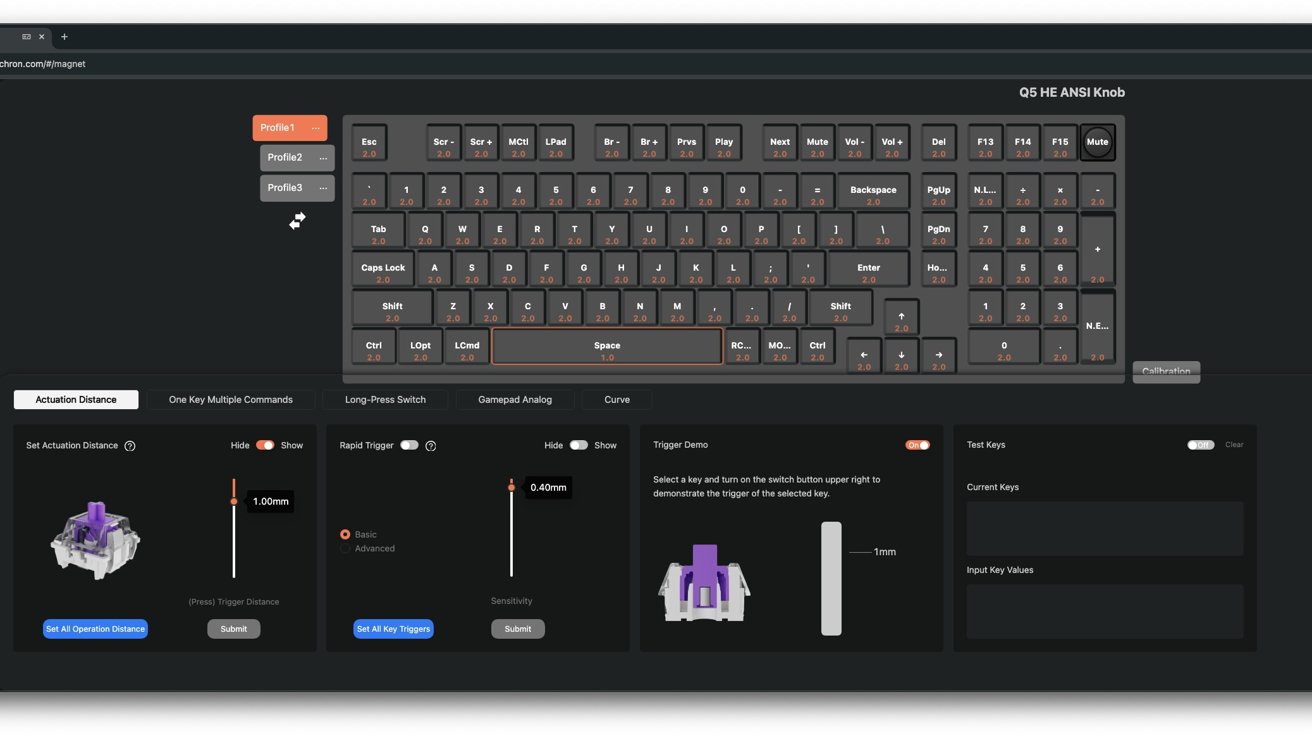
Keychron Q5 HE review: The HE menu of Keychron Launcher.
You can assign multiple actions to one key depending on the depth of your keystroke since the actuation distance can be quantified so accurately. This adds a whole new dimension to macros and shortcuts.
For example, you could make a half-press on the backspace to delete the last character, but a full press could be a macro to delete the previous word or line. These advantages of HE go beyond just gaming.Keychron Q5 HE - Specs
Product Detail
Spec
Keycap
OSA Double-shot keycaps, not shine-through
MCU
ARM Cortex-M4 32-bit STM32F402RC (256KB Flash)
Backlight
South-facing RGB LED
Switch
Gateron double-rail magnetic switch
Hot-swappable Support
Yes, compatible with Gateron double-rail magnetic switch only.
Stabilizer
Screw-in PCB stabilizer
Cable
Type-C cable (1.8 m) + Type-A to Type-C adapter
Connectivity
2.4 GHz / Bluetooth / Type-C wired
Bluetooth Version
5.2
Battery
4000 mAh Rechargeable li-polymer battery
Operating Environment
-10 to 50
Wireless Working Time (Backlit off)
Up to 100 hours
Weight
2187 g 10 g (Fully Assembled version)
Body Material
Aluminum
Plate Material
Aluminum
Polling Rate
1000 Hz (Wired and 2.4 GHz) / 90Hz (Bluetooth)
Keychron Q5 HE - Use
First off, the typing experience on the Gateron Nebula switches is extremely smooth. You can feel the difference between a magnetic and mechanical keyboard in that less material (no springs and fewer mechanical parts) is pushed into the board, giving a lighter feel.
The magnetic keys activate precisely upon pressing and deactivate when you release, which allows for an immediate repetition of keystrokes, making the reset faster than traditional mechanical switches. This technically will enable you to "type faster" if you do several of the same input in succession, which is largely useful for those who game, code, or use macros for anything.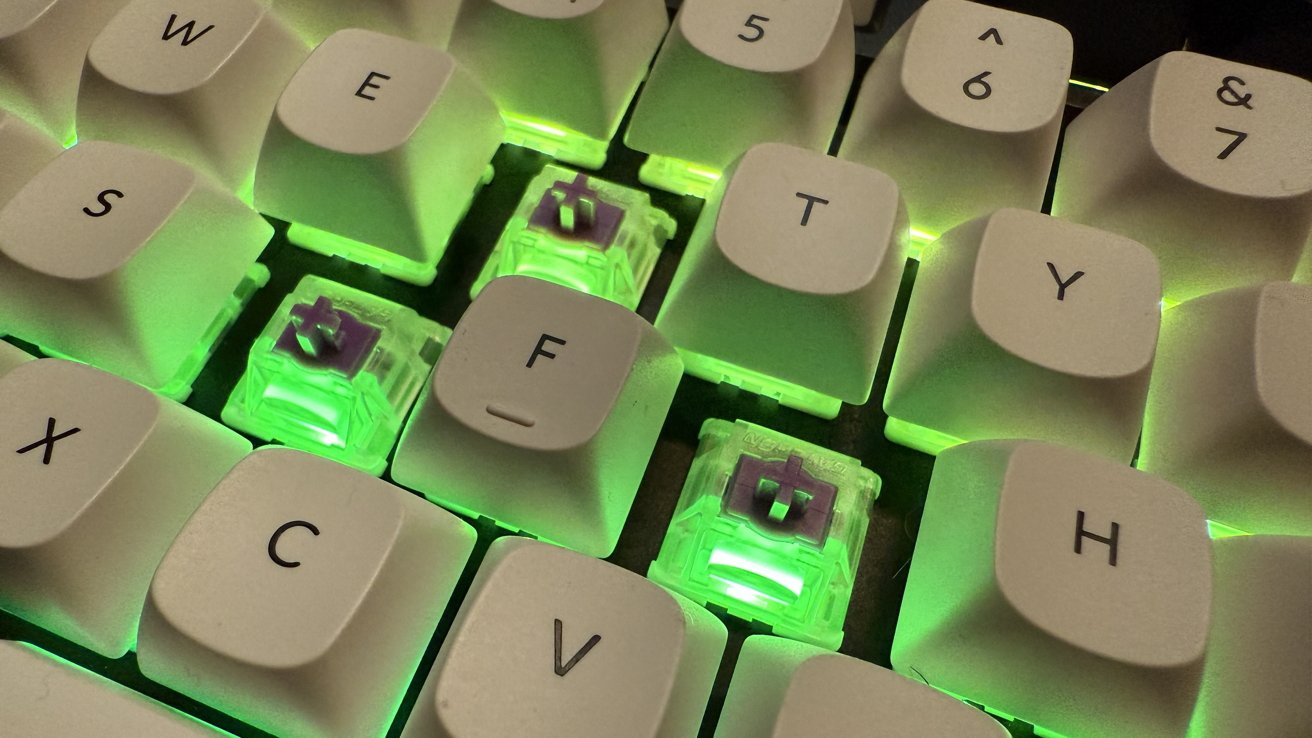
Keychron Q5 HE review: Closeup of the Gateron Double-Rail Magentic Nebula Switch.
At around 5 pounds (2187 g) fully assembled, the Q5 model is a semi-permanent block of aluminum on your desk, making it not so portable.
As with most Keychron keyboards in this price range, you can connect to up to three devices via Bluetooth, allowing you to use the Q5 HE to switch between your Mac, iPhone, and iPad. This also works well with the Windows/Mac switch on the back, so you can pair both to bring out the gaming advantage of HE keyboards on your PC.
To pair, press fn+1, 2, or 3 and hold for four seconds to connect to a new device, lightly press fn and the number for your device to switch to that specific one.
The latency on the Q5 HE is extremely low as well, as a processor is embedded in the case for a 1000 Hz polling rate while wired and wireless with a 2.4 GHz wireless connection and Bluetooth 5.2.
Keychron Q5 HE review: 96% layout with an aluminum body takes up a bit of space.Keychron Q5 HE - Hall Effect can be for everyone
HE keyboards have become infamous for their ability to provide faster responses to time-sensitive tasks like competitive games, but they're also just fun to use for daily life. People use their keyboards to work and play hard, so it's the best of both worlds to have something to give you an edge inside a durable chassis.
Keychron has a reliable formula for their keyboards in this price range, emphasizing customization, durability, and quality of switches. The Q5 HE checks off all these boxes and may be one of the easiest ways for a Mac user to enjoy an HE keyboard.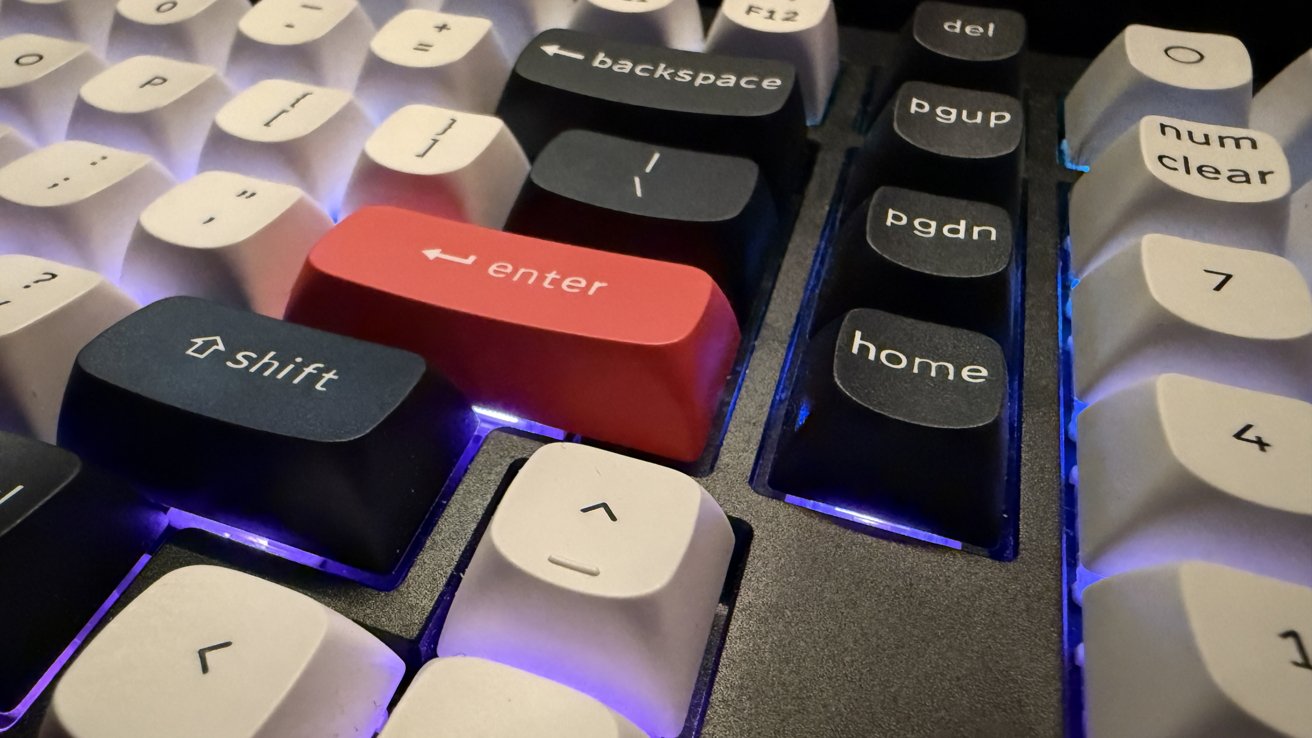
Keychron Q5 HE review: Closeup of the keys.Keychron Q5 HE Pros
- Hardware and software make the most of magnetic switches
- 1000 Hz polling wired or wireless
- Durable, reliable keyboard
Keychron Q5 HE Cons
- Controversial for competitive gaming
- Needs customization to get the most out of it, not for everyone
Rating: 4 out of 5
Where to buy the Keychron Q5 HE
The Keychron Q5 HE is available on Amazon for $249.99, and the Keychron store for $229.00.
Read on AppleInsider

